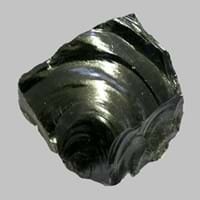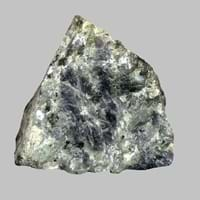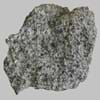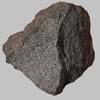Definition
Obsidian is a naturally occurring volcanic glass formed as an extrusive igneous rock. It is produced when felsic lava extruded from a volcano cools rapidly with minimum crystal growth
Anorthosite is a granular igneous rock composed largely of labradorite or plagioclase
Discoverer
Obsius
Unknown
Etymology
From Latin obsidianus, misprint of Obsianus (lapis) (stone) of Obsius
From French anorthose plagioclase + -ite1
Class
Igneous Rocks
Igneous Rocks
Sub-Class
Durable Rock, Medium Hardness Rock
Durable Rock, Medium Hardness Rock
Other Categories
Opaque Rock
Coarse Grained Rock, Opaque Rock
Texture
Glassy
Foliated, Glassy
Color
Black, Blue, Brown, Green, Orange, Red, Tan, Yellow
Black, Bluish - Grey, Brown, Green, Grey, Light Greenish Grey, Pink, White
Durability
Durable
Durable
Appearance
Shiny
Layered, Banded, Veined and Shiny
Interior Uses
Decorative Aggregates, Interior Decoration
Decorative Aggregates, Floor Tiles, Homes, Interior Decoration
Exterior Uses
Garden Decoration
As Building Stone, As Facing Stone, Garden Decoration
Other Architectural Uses
Not Available
Curbing
Construction Industry
Arrowheads, Cutting Tool, Knives, Scrapers, Spear Points
As Dimension Stone, Cement Manufacture, for Road Aggregate
Medical Industry
Surgery
Not Available
Antiquity Uses
Artifacts, Jewellery
Artifacts, Sculpture, Small Figurines
Commercial Uses
Creating Artwork, Mirror, Used in aquariums
Creating Artwork, Curling
Types
Fireworks Obsidian, Mahogany, Sheen Obsidian, Snowflake obsidian and Velvet Peacock Obsidian
Proterozoic Anorthosite and Archean Anorthosite
Features
Blocks negativity, Helps to protect against depression
Generally rough to touch, Is one of the oldest rock
Archaeological Significance
Monuments
Not Yet Used
Not Yet Used
Famous Monuments
Not Applicable
Not Applicable
Sculpture
Not Yet Used
Used
Famous Sculptures
Not Applicable
Not Applicable
Pictographs
Used
Not Used
Petroglyphs
Used
Not Used
Figurines
Not Yet Used
Used
Formation
When the lava is released from volcano, it undergoes a very rapid cooling which freezes the mechanisms of crystallization. The result is a volcanic glass with a uniform smooth texture.
Anorthosite is a phaneritic, intrusive igneous rock which is characterized by a predominance of plagioclase feldspar which is almost 90–100%, and a minimal mafic component.
Mineral Content
Not Available
Amphibole, Clinopyroxene, Ilmenite, Magnetite, Olivine, Orthopyroxene
Compound Content
Aluminium Oxide, CaO, Iron(III) Oxide, FeO, Potassium Oxide, MgO, MnO, Sodium Oxide, Phosphorus Pentoxide, Silicon Dioxide, Titanium Dioxide
Ca, CaO, Chromium(III) Oxide, MgO, Sulfur Trioxide
Types of Metamorphism
Burial Metamorphism, Cataclastic Metamorphism, Contact Metamorphism
Cataclastic Metamorphism, Contact Metamorphism
Types of Weathering
Biological Weathering, Chemical Weathering, Mechanical Weathering
Biological Weathering
Types of Erosion
Chemical Erosion, Coastal Erosion, Glacier Erosion
Chemical Erosion, Wind Erosion
Grain Size
Not Applicable
Coarse Grained
Fracture
Conchoidal
Irregular
Porosity
Very Less Porous
Less Porous
Luster
Vitreous
Pearly to Subvitreous
Compressive Strength
Not Available
Cleavage
Not Available
Not Available
Toughness
Not Available
Not Available
Specific Gravity
2.6-2.7
2.62-2.82
Transparency
Translucent
Translucent
Density
2.6 g/cm3
2.7-4 g/cm3
Resistance
Heat Resistant, Impact Resistant
Heat Resistant, Impact Resistant, Pressure Resistant, Scratch Resistant, Wear Resistant
Deposits in Eastern Continents
Asia
Afghanistan, Indonesia, Japan, Russia
Not Available
Africa
Kenya
Not Available
Europe
Greece, Hungary, Iceland, Italy, Turkey
Bulgaria, France, Germany, Greece, Hungary, Italy, Latvia, Lithuania, Malta, Poland, Portugal, Romania, Slovenia, Spain, Sweden, The Czech Republic
Others
Not Available
Not Available
Deposits in Western Continents
North America
Canada, Mexico, USA
Canada
South America
Argentina, Chile, Ecuador, Peru
Bolivia, Colombia
Deposits in Oceania Continent
Australia
New Zealand
Central Australia, South Australia, Western Australia
All about Obsidian and Anorthosite Properties
Know all about Obsidian and Anorthosite properties here. All properties of rocks are important as they define the type of rock and its application. Obsidian and Anorthosite belong to Igneous Rocks.Texture of Obsidian is Glassy whereas that of Anorthosite is Foliated, Glassy. Obsidian appears Shiny and Anorthosite appears Layered, Banded, Veined and Shiny. The luster of Obsidian is vitreous while that of Anorthosite is pearly to subvitreous. Obsidian is available in black, blue, brown, green, orange, red, tan, yellow colors whereas Anorthosite is available in black, bluish - grey, brown, green, grey, light greenish grey, pink, white colors. The commercial uses of Obsidian are creating artwork, mirror, used in aquariums and that of Anorthosite are creating artwork, curling.










